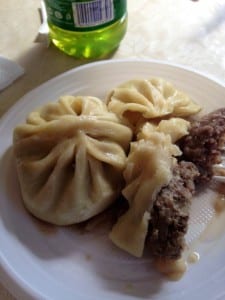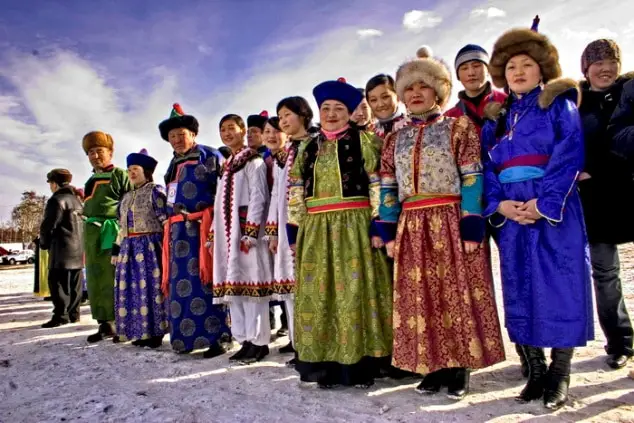Today there are approximately 500,000 people that identify with the largest indigenous group living in Siberia, the Buryats. The Buryats are a group of people descendent of various Siberian and Mongolian people that inhabited the Lake Baikal area, where most of the ethnic group is still concentrated, with many continuing to engage in traditional ways of life. The Buryats have their own history, culture, and language, the roots of which are embedded within the history and culture of the Mongols, and the presence of which is not to go unnoticed in Eastern Siberia.

1. Tea with Milk.
How someone makes their tea can be a strong indicator of their heritage, especially when referring to the Buryats. Milk became a staple in the territory of Buryatia due to the areas around them that were used for cattle grazing. Milk became easily accessible and was used often in these areas. Various dishes were made incorporating dairy products and tea was always enjoyed with milk, something that is not commonly done by Russians who are not of Buryat descent. The importance of milk was also shown through a popular Buryat custom of treating visitors with some form of dairy when they arrived.
2. Eat Some Buuzy. Eat Lots and Lots of Buuzy.
Buuzy, also known as Pozi, are sold everywhere throughout the city. Pozi are steamed dumplings, usually filled with pork, beef, or lamb. If you look hard enough you can also find pozi of the vegetarian variety. There are booths in the central market, small cafes scattered around the city, as well as a few good Mongolian restaurants, that all serve pozi. To get the full experience it is recommended to bite a small hole in the doughy shell and suck out the juice before eating the whole dumpling. This is also a good way to make sure that you don’t dribble the fatty juices on your shirt as you indulge in this traditional Buryat dish.

3. Shamanism.
Because of the nature of Shamanism as an outdoor, decentralized religion there not many places of worship within the city. Just a short drive away, however, to Listvyanka or Lake Baikal, you will be able to notice the presence of Shamanism, one of the primary religions of the Buryat people. Often times you will see rows of colorful ribbons or flags tied onto tree branches symbolizing the prayers of those who tied them. This tradition is also shared by local Shamans and the local Buddhists. Many places also sell ribbons to tie so you can take part in the spiritual experience yourself.
4. Stop and Look Around.
By being observant in every day life in the city you will start to notice that although Irkutsk is not the capital of Buryatia like Ulan Ude is, the Buryat culture is found all throughout and in many different forms. This includes the people, the food, and just about everything else. The Buryat presence can be felt everywhere, however, it is subtle and will not jump out at you unless you know what to look for. One example of this is the colors that are found throughout the city in both traditional clothing and the colors that houses are painted. When thinking of the traditional colors used in the Russian culture, reds, blacks and gold are the first colors that come to mind. These colors, however, are better associated with Western Russia, while more vibrant colors of blues, greens, and even pinks are more commonly found in Eastern Russia and Siberia. In comparison to the colors of traditional Buryat clothing, decorations and even the ribbons that are used in Shamanism, the common colors found throughout Irkutsk and Siberia as a whole better resemble those of the Buryats than those of Western Russia.


5. Talk to people.
More people than you would think have ancestors who were Buryats. Although they may not openly identify as Buryat, they often know a lot about the culture and experiences and can tell you more about the Buryat people than any Google search could. I have found this outlet most helpful, as my host mom is part Buryat and it shows through without her even having to say it. In her appearance, cooking, and conversation, she shares so much about her individual and unique culture without even realizing it.





